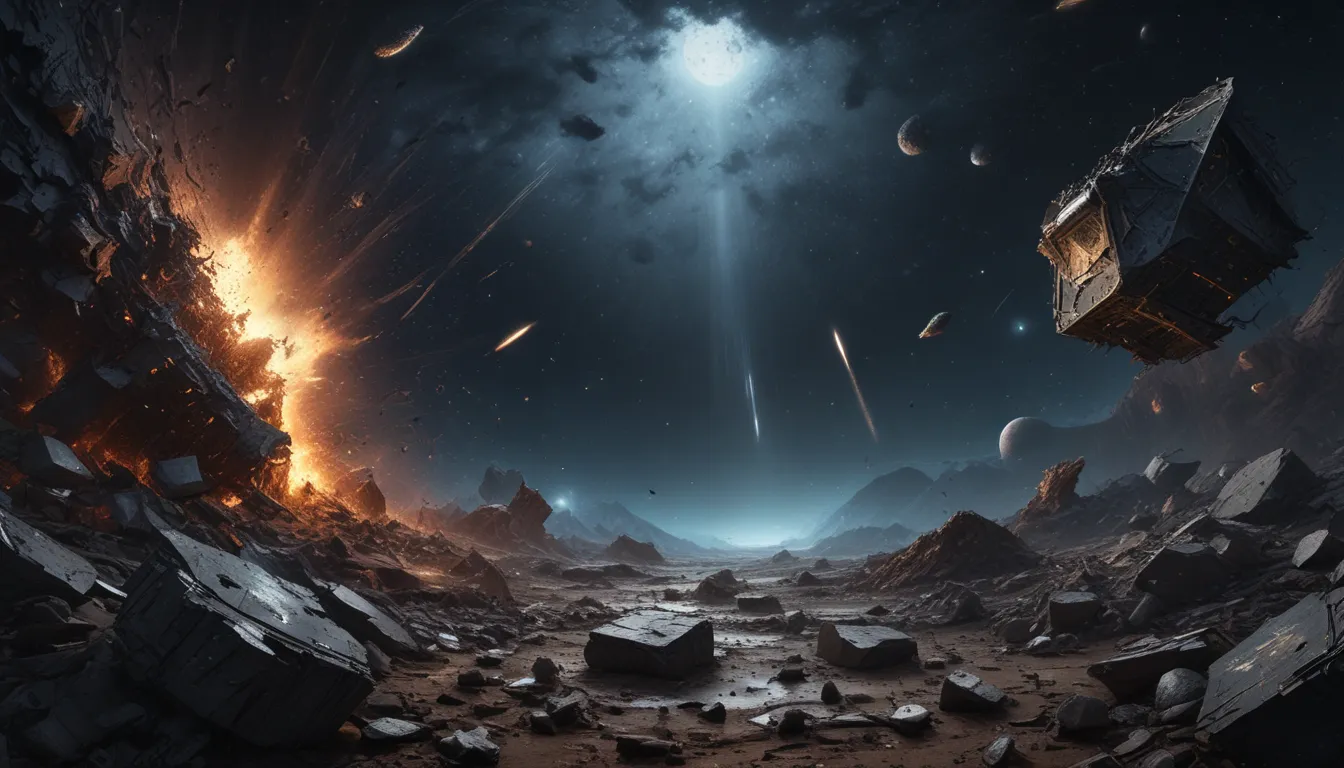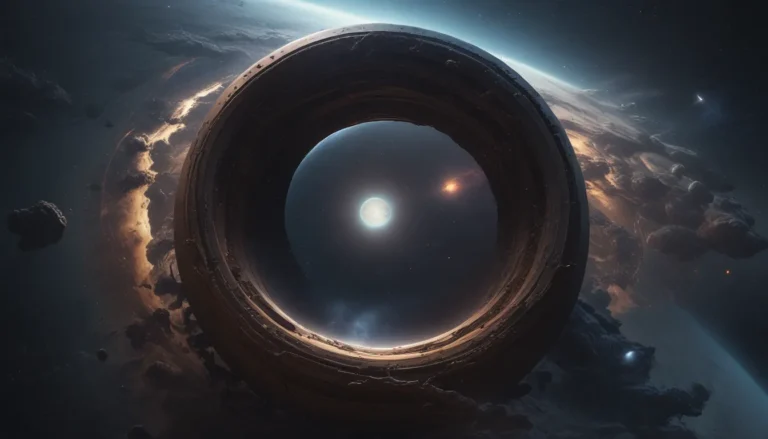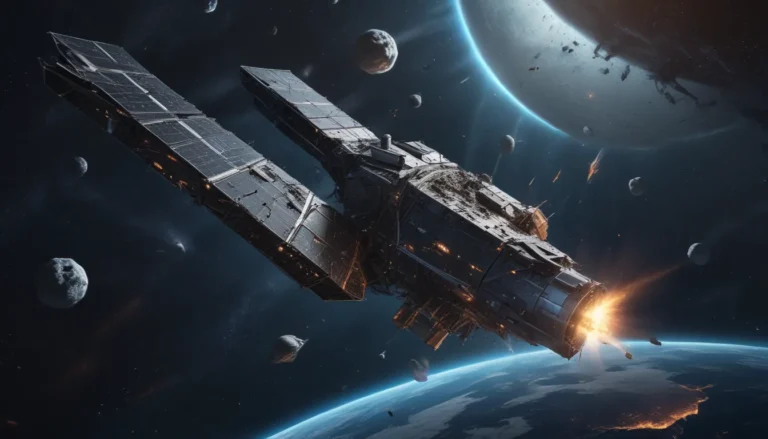The pictures we use in our articles might not show exactly what the words say. We choose these pictures to make you interested in reading more. The pictures work together with the words but don’t take their place. The words still tell you the important facts.
Are you curious about the growing challenges of space debris and the policies put in place to mitigate its impact on the cosmic environment? Join us on a fascinating journey through 12 mind-blowing facts about space debris mitigation policies. As we delve into the world of space exploration and satellite deployment, we will uncover the importance of international cooperation, advanced technologies, and responsible space operations in ensuring a sustainable and safe space environment for future generations.
The Growing Threat of Space Debris
Space debris, also known as "space junk," poses a significant risk to operational satellites and spacecraft orbiting the Earth. With the increasing number of satellite launches and space missions, the accumulation of debris continues to grow, posing challenges for space agencies and commercial entities alike.
The Kessler Syndrome
The Kessler Syndrome, proposed by NASA scientist Donald J. Kessler, highlights the potential catastrophic consequences of a dense concentration of space debris in certain orbits. This scenario could lead to a chain reaction of collisions, creating even more debris and rendering certain orbits unusable for satellite operations.
International Cooperation is Crucial
Space debris mitigation policies require international collaboration and coordination. Organizations like the United Nations Office for Outer Space Affairs (UNOOSA) and the Inter-Agency Space Debris Coordination Committee (IADC) work together to establish guidelines and best practices for space-faring nations to prevent the generation of new debris and mitigate existing risks.
Debris Mitigation Guidelines
The IADC has developed debris mitigation guidelines that recommend measures such as post-mission disposal of satellites, minimizing explosion risks, and designing spacecraft to limit the release of debris. These guidelines aim to reduce the chances of collisions and the creation of additional space debris.
Active Debris Removal
Technologies for active debris removal are being developed to capture and remove large objects or deorbit them to burn up in the Earth's atmosphere. Concepts like satellite servicing missions and space-based robotic systems are explored by several companies and organizations to tackle the growing problem of space debris.
The Role of Space Agencies
Space agencies like NASA, ESA, and Roscosmos play a vital role in space debris mitigation efforts. Through research, technology development, and international collaborations, these agencies work towards ensuring the long-term sustainability of space activities.
Impact on Satellite Operations
Space debris poses a significant threat to satellite operations, including communication, weather forecasting, navigation, and scientific research. Collisions with even small debris can cause catastrophic damage, disrupting critical services that rely on satellites.
Collision Avoidance Measures
Satellite operators employ collision avoidance measures to reduce the risk of collisions with space debris. Tracking debris paths, maneuvering satellites to avoid collisions, and sharing data with other operators are crucial steps to ensure the safety of space assets.
Space Debris Tracking
Tracking space debris is essential for collision avoidance and space debris mitigation. Ground-based radars, optical systems, and space-based sensors monitor the movement of debris, providing accurate data for satellite operators to make informed decisions.
Legal Framework for Space Debris
A global legal framework addresses space debris, requiring countries to minimize debris generation and mitigate the risks associated with space activities. International agreements like the Outer Space Treaty set guidelines for responsible space operations.
Future Challenges
As more countries and commercial entities enter space exploration, the challenges of space debris mitigation will continue to escalate. Cooperation, technological advancements, and sustainable space practices will be crucial in ensuring the long-term viability of space activities.
The Importance of Public Awareness
Raising public awareness about space debris and its impact is essential in garnering support for space debris mitigation efforts. Educating the general public about responsible space operations and the significance of space debris policies can help maintain a clean and safe space environment.
Conclusion
Space debris mitigation policies are crucial for preserving the sustainability of space activities and protecting our cosmic environment. From the development of innovative technologies to the implementation of responsible space practices, efforts are underway to mitigate the risks associated with space debris. By adhering to guidelines, promoting international cooperation, and fostering public awareness, we can ensure a safe and sustainable future for space exploration.
FAQs
- What is space debris?
-
Space debris refers to defunct human-made objects, including satellites, spent rocket stages, and fragments left floating in space.
-
How many objects are considered space debris?
-
There are over 170 million debris objects larger than 1 millimeter orbiting the Earth.
-
Why is space debris a concern?
-
Space debris poses a significant risk to active satellites, the International Space Station, and future space missions due to potential collisions and chain reactions.
-
What are space debris mitigation policies?
-
These policies aim to reduce debris creation, limit proliferation, and promote the removal of defunct satellites and debris from orbit.
-
How do space debris mitigation policies work?
-
By encouraging spacecraft design to minimize debris generation and planning end-of-life disposal options like deorbiting satellites.
-
Are space debris mitigation policies enforceable?
- While typically voluntary, there is a focus on developing legally binding regulations to maintain a sustainable space environment.
Explore the fascinating world of space debris management through facts that will leave you in awe. Join us on this cosmic journey as we navigate the challenges and opportunities in safeguarding the future of space exploration and satellite operations. Let's work together towards a cleaner, safer, and sustainable cosmic environment for generations to come.






